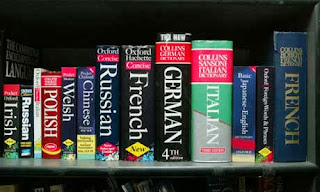After learning about the first main
step that is called” Task definition” of Big-6 and with full of intention of
curiosity, our lecturer introduced a new topic that is known as “Structure of
information”. We got the knowledge about the framework and what are the steps
that we should implement to find factual and accurate information. Before going
onwards, she told us about learning objectives that we learnt in this topic.
The subtopics were about the differentiation of primary, secondary and tertiary
source by using information. Now, we had proceeded to second step of Bog-6 that
is called “Information seeking behavior”. She also reminded us nearby the two
stages those are “determine range source” and prioritize sources”.
It refers to any
place, thing where user can get the information. It can be books, people,
internet, website and many others information sources. As we knew about the information source, so
who is the producers of these information resources. There are many people such
as, students, teacher, government and private sectors included profit
organization and nonprofit organizations.
Information source can be three types such as,
1. Printed (Books, magazines, dictionaries
etc.).
2. Non printed (Wikipedia, Google, blogs).
3. Interview or video
Primary source:
A primary
resource is an original documents or known as first-hand information. This is
the most reliable and factual information that enable the researcher to get as
close as possible to the source.
Primary source information can be recognize
in the form of,
Diaries, journals, autobiographies,
speeches, historical documents such as birth certificate, government records,
court documents, military records, publisher first-hand stories, recoding and
interviews and many others.
Secondary source is a second hand
information that conveys the experience of others. Actually, secondary source
information is written about primary source. There are many secondary sources
such as biography, Almanac and encyclopedia books.
Tertiary source is the distillation and
collection of primary and secondary sources. It includes most types of references.
There are three types of tertiary sources such as bibliographies of
bibliography, directories of directories and guides to the literature.
After that, she gave us some sources
for identification. we tried to recognize the sources and hopefully we
identified most of them. She also
acknowledge about the newspaper and magazines articles. It can be primary or secondary
source depend on the given situation.
Reference Sources:
Reference
sources or materials that provide quick, factual information about the topic. They
are designed to be consulted rather than read through. It can be books,
serials, online database or internet. There are two types of reference sources,
one is specific and other is general. They can provide definition and general
information and arranged alphabetically, topically or chronological order.
Encyclopedia, dictionaries, directories, Atlases and maps, handbooks, guide
books and journal can be reference sources.
The question was in my mind, why we
use reference sources? Our lecturer came to this point and cleared it to me. we
use because it is the best place to start our research . They provide good
instruction about the topic, provide brief and factual information, define
unfamiliar terms and identify additional relevant sources.
1. Encyclopedia
An encyclopedia is a
book that contains concise, factual information on topics or concepts. It also
containing general information about topics and arranged alphabetically order.
It can be two type, general or specific encyclopedia. General encyclopedia arranged
articles by topics. Specific encyclopedia is available for academic discipline.
They provide more in depth and technical information than general encyclopedia.
2. Dictionaries
Dictionary is also a
reference source that provides information about words. Definition, spelling, pronunciation,
usage, synonyms, abbreviation and grammatical information provided by it. it
can also in the form of general, historical, etymological, subject directory,
period or scholarly specialized, subject and others dictionaries provide
various information about different words.
There are some types of dictionaries
known by different names,
1. Glossary
2. Lexicon
3. Thesaurus
4. Vocabulary
3. Geographical sources
A biographical source is
a directory of prominent person, usually arranged alphabetically, by surnames,
with biographical identification that range from brief outline to extend
narrative.
It is
another form of information source that allows people to gain information about
places. Maps, Gazetteers, Atlases, Globes, Travel guides and Global positioning
system are included in geographical sources. After that, she illustrate the. A
map is a flat drawing that describes a place or part of the world. A globe is a
three dimensional model of earth. Atlases contain collections of maps. They
provide information on geographical or political changes. Gazetteers referred
as geographical dictionaries and provide descriptions of places.
Our lecturer also
demonstrates about year books that is a record of annual development in a geographical
area in a subject discipline or in an organization.
6. Periodical Publication
It refers to a
material that is published at regular basis. Its publication comes out
regularly or occasionally. For example, Journals, Magazines and newspapers.
At last we learnt about the format
of information source that include microfilm, audiovisual media and
bibliographical database. A bibliographical database is a bibliographical
record, an organized collection of references including journal and newspaper
article, reports and government and legal publication.
Where we can find information
sources?
They can be found in the form of















.jpg)

